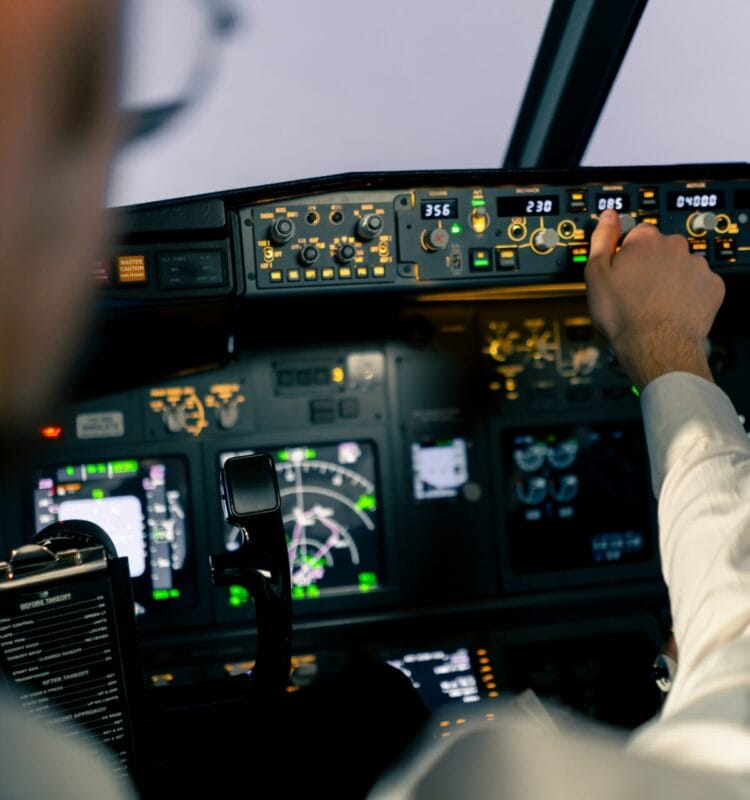EN


In the rapidly evolving world of aviation and aerospace, staying at the forefront of technology and innovation is vital. Smart Eye is leading the charge in the development of eye tracking solutions. Their commitment to revolutionizing human-machine interaction and enhancing safety and efficiency in aviation has opened doors to innovative collaborations that are shaping the future of these industries.
Smart Eye’s mission is clear: to optimize flight safety, pilot performance, and human-machine interaction. Through our cutting-edge eye tracking technology, we are helping researchers, pilots, and operators reach new insights and perform at their best, both on the ground and 30,000 feet above it.
Smart Eye is at the forefront of developing advanced remote eye tracking systems designed for aviation and aerospace research, pilot monitoring, and pilot training. These systems offer unique insights into human behavior and are driving the aviation industry toward even higher safety standards.
In pilot training, Smart Eye’s technology is used to help aspiring pilots refine their scanning techniques, preparing them for future flights. While in the air, eye tracking plays a crucial role in enhancing flight safety by ensuring pilots remain alert and attentive while monitoring critical instruments.
NASA, a pioneer in aerospace exploration, has embraced Smart Eye’s technology in their Flight Deck Simulators and Research Flight Deck. It’s used to monitor pilot state and behavior, a testament to the trust placed in Smart Eye’s innovative solutions.
Aviation and aerospace rely heavily on human-machine interaction, and Smart Eye’s eye tracking systems are playing a pivotal role in human factors research, contributing to smoother and safer air travel. By analyzing how pilots perceive and respond to automation, these systems enhance research into human factors like spatial disorientation and performance. This research is conducted with unparalleled precision, ensuring safer skies without risking human lives.
To provide a deeper understanding of how these technologies are transforming aviation research, we recently hosted a comprehensive webinar on remote 3D head and eye tracking. Drawing from over 20 years of industry experience, the webinar delves into the unique features of remote 3D multi-camera eye tracking, shedding light on its relevance in aviation research.
Nearly half of aviation accidents today stem from inadequate scanning of vital parameters within the cockpit. Smart Eye’s eye tracking technology contributes to pilot monitoring systems, focusing on analyzing the pilots’ gaze movement, head pose, pupillometry, and eyelid movements. By doing so, it detects distraction and drowsiness, minimizing scanning errors, and significantly improving flight safety across various aircraft.
A highly skilled pilot is essential for ensuring safe air travel. In flight training, Smart Eye’s technology is invaluable in enhancing the scanning techniques of future pilots. Real-time data provided by their eye tracking systems allows trainers to analyze pilot recruits, identify strengths and weaknesses, and ultimately enhance their performance.
As aviation and aerospace continue to evolve, collaborating with companies like Smart Eye helps achieve new heights in these industries. Their cutting-edge eye tracking solutions have the potential to reshape how we approach aviation research, pilot training, and flight safety.
For organizations that are looking to tap into the future of aviation and aerospace, partnering with Smart Eye is a forward-thinking move. Our team’s expertise, knowledge, and technology can drive innovation in various areas of aviation, ultimately improving human-machine interaction, pilot performance, and flight safety.
In the dynamic world of aviation and aerospace, innovation and safety are paramount. Smart Eye’s pioneering eye-tracking solutions are helping pave the way for a safer, more efficient, and technologically advanced future in these industries. In collaborating with Smart Eye, your organization can tap into the full potential of this groundbreaking technology, driving progress and innovation for the benefit of all.
Interested in eye tracking for pilot training? Download our Comprehensive Guide to Eye Tracking Technology for the Aviation Industry here, or contact us today to schedule a demo!
